Showing Spotlights 977 - 984 of 2877 in category All (newest first):
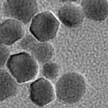 Researchers have, for the first time, used naturally occurring bacterial magnetic nanoparticles (BMPs) - magnetosome extracted from magnetotactic bacteria - to substitute man-made nanoparticles for photothermal cancer therapy. Compared with engineered magnetic nanoparticles, BMPs have specific features such as large-scale production, monodispersity, good biocompatibility, high crystallinity, and close-to-bulk magnetization besides being covered with a lipid bilayer. This layer of biomembrane is particularly useful as it removes the need for a postsynthetic surface modification step for escaping destruction by the body's immune system.
Researchers have, for the first time, used naturally occurring bacterial magnetic nanoparticles (BMPs) - magnetosome extracted from magnetotactic bacteria - to substitute man-made nanoparticles for photothermal cancer therapy. Compared with engineered magnetic nanoparticles, BMPs have specific features such as large-scale production, monodispersity, good biocompatibility, high crystallinity, and close-to-bulk magnetization besides being covered with a lipid bilayer. This layer of biomembrane is particularly useful as it removes the need for a postsynthetic surface modification step for escaping destruction by the body's immune system.
Nov 10th, 2016
 Researchers have demonstrated that full-color 3D meta-holography imaging with extended viewing angles can be realized by a single layer of nanostructured metallic surface. In order to overcome the cross-talk among different colors that normally exists in current metasurface holography, the researchers introduced an off-axis illumination method to shift the holographic image in different colors and successfully reconstructed all visible colors in the imaging area. Taking advantages of the achromatic feature of the structure, the team also demonstrated full-color holography based on seven primary colors and 3D holographic imaging.
Researchers have demonstrated that full-color 3D meta-holography imaging with extended viewing angles can be realized by a single layer of nanostructured metallic surface. In order to overcome the cross-talk among different colors that normally exists in current metasurface holography, the researchers introduced an off-axis illumination method to shift the holographic image in different colors and successfully reconstructed all visible colors in the imaging area. Taking advantages of the achromatic feature of the structure, the team also demonstrated full-color holography based on seven primary colors and 3D holographic imaging.
Nov 9th, 2016
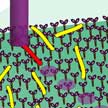 One way to construct useful molecular machines is to combine natural molecules - such as proteins or DNAs in our body - with synthetic molecules in order to control the functions of the natural molecules. Building on previous work that allowed to achieve complete control over on/off switching of the movement of a nanomachine, researchers in Japan have, for the first time, developed a molecular system which allows free control of the motion of single microtubules. The microtubules, tube-like structure with measuring 25 nm in diameter, could potentially serve as carriers of various molecular cargoes in future nano-transportation systems.
One way to construct useful molecular machines is to combine natural molecules - such as proteins or DNAs in our body - with synthetic molecules in order to control the functions of the natural molecules. Building on previous work that allowed to achieve complete control over on/off switching of the movement of a nanomachine, researchers in Japan have, for the first time, developed a molecular system which allows free control of the motion of single microtubules. The microtubules, tube-like structure with measuring 25 nm in diameter, could potentially serve as carriers of various molecular cargoes in future nano-transportation systems.
Nov 8th, 2016
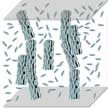 Carbon nanotubes (CNTs) being highly electrically conductive along the tube axis, have gained great research interests in recent years for connecting two conducting electrodes at the nanoscale - where the CNTs can be integrated into a micro- or nanoelectronic system. Therefore, the orientational control of CNTs has drawn a great deal of research interest in nanotechnology. Researchers now have developed a technique to bridge two electrical conductors by assembling CNTs guided by liquid crystals.
Carbon nanotubes (CNTs) being highly electrically conductive along the tube axis, have gained great research interests in recent years for connecting two conducting electrodes at the nanoscale - where the CNTs can be integrated into a micro- or nanoelectronic system. Therefore, the orientational control of CNTs has drawn a great deal of research interest in nanotechnology. Researchers now have developed a technique to bridge two electrical conductors by assembling CNTs guided by liquid crystals.
Nov 1st, 2016
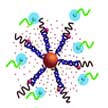 Scientists have designed an advanced type of nanoparticle, which is able to carry drugs directly into cells and release them only in the presence of an appropriate mRNA signature; in other words, the nanoparticle carriers release their payload only in specific - metastatic cancer - cells and remain inactive in healthy cells. The researchers designed nanoparticles that can selectively distinguish healthy cells from model metastatic cells and release their payload - an anticancer drug - only to the model metastatic cells.
Scientists have designed an advanced type of nanoparticle, which is able to carry drugs directly into cells and release them only in the presence of an appropriate mRNA signature; in other words, the nanoparticle carriers release their payload only in specific - metastatic cancer - cells and remain inactive in healthy cells. The researchers designed nanoparticles that can selectively distinguish healthy cells from model metastatic cells and release their payload - an anticancer drug - only to the model metastatic cells.
Oct 31st, 2016
 Planar optical components are crucial to realize miniaturized optical systems and integrated optoelectronic devices. In particular, metasurfaces are of great interest for applications ranging from high resolution imaging to three-dimensional holography. Achromatic metasurfaces, which can maintain the same focal distance over a range of wavelengths, have been realized by engineering each subwavelength unit to induce an identical phase change at all wavelengths. However, the design method requires intensive computation. Researchers now have developed a highly efficient, universal algorithmic method based on evolutionary principles for the design of ultra-thin achromatic lenses.
Planar optical components are crucial to realize miniaturized optical systems and integrated optoelectronic devices. In particular, metasurfaces are of great interest for applications ranging from high resolution imaging to three-dimensional holography. Achromatic metasurfaces, which can maintain the same focal distance over a range of wavelengths, have been realized by engineering each subwavelength unit to induce an identical phase change at all wavelengths. However, the design method requires intensive computation. Researchers now have developed a highly efficient, universal algorithmic method based on evolutionary principles for the design of ultra-thin achromatic lenses.
Oct 28th, 2016
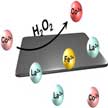 Oxygen evolution reaction (OER) is the core process - but also the bottleneck - in many energy devices such as metal-air batteries and water-splitting techniques, calling for new insights in rational design of OER electrocatalysts. The perovskite family exhibits superb OER reactivity, but its poor conductivity remains a big problem, not to mention that the morphology of perovskite oxides is hard to control. In situ hybridization of perovskite oxides with conductive frameworks is an efficient strategy to solve these problems, as researchers report in new work.
Oxygen evolution reaction (OER) is the core process - but also the bottleneck - in many energy devices such as metal-air batteries and water-splitting techniques, calling for new insights in rational design of OER electrocatalysts. The perovskite family exhibits superb OER reactivity, but its poor conductivity remains a big problem, not to mention that the morphology of perovskite oxides is hard to control. In situ hybridization of perovskite oxides with conductive frameworks is an efficient strategy to solve these problems, as researchers report in new work.
Oct 24th, 2016
 Researchers have created a new method to print high-performance electronics by combining the extremely mature CMOS fabrication processes and recently developed additive manufacturing techniques. For the first time, an affordable and reliable manufacturing process for the integration and packaging of fully flexible high-performance electronics has been developed for future Internet-of-Everything (IoE) applications. Such decal electronic systems could be used like RFID tags are today but with much more functionality and performance.
Researchers have created a new method to print high-performance electronics by combining the extremely mature CMOS fabrication processes and recently developed additive manufacturing techniques. For the first time, an affordable and reliable manufacturing process for the integration and packaging of fully flexible high-performance electronics has been developed for future Internet-of-Everything (IoE) applications. Such decal electronic systems could be used like RFID tags are today but with much more functionality and performance.
Oct 17th, 2016
 Researchers have, for the first time, used naturally occurring bacterial magnetic nanoparticles (BMPs) - magnetosome extracted from magnetotactic bacteria - to substitute man-made nanoparticles for photothermal cancer therapy. Compared with engineered magnetic nanoparticles, BMPs have specific features such as large-scale production, monodispersity, good biocompatibility, high crystallinity, and close-to-bulk magnetization besides being covered with a lipid bilayer. This layer of biomembrane is particularly useful as it removes the need for a postsynthetic surface modification step for escaping destruction by the body's immune system.
Researchers have, for the first time, used naturally occurring bacterial magnetic nanoparticles (BMPs) - magnetosome extracted from magnetotactic bacteria - to substitute man-made nanoparticles for photothermal cancer therapy. Compared with engineered magnetic nanoparticles, BMPs have specific features such as large-scale production, monodispersity, good biocompatibility, high crystallinity, and close-to-bulk magnetization besides being covered with a lipid bilayer. This layer of biomembrane is particularly useful as it removes the need for a postsynthetic surface modification step for escaping destruction by the body's immune system.
 Subscribe to our Nanotechnology Spotlight feed
Subscribe to our Nanotechnology Spotlight feed





